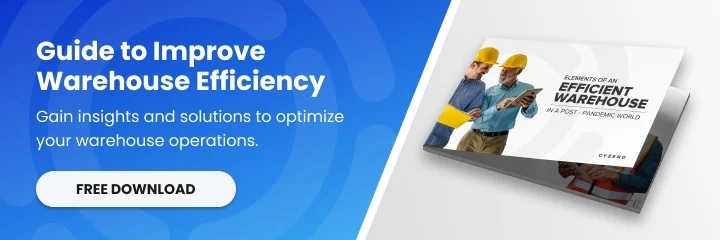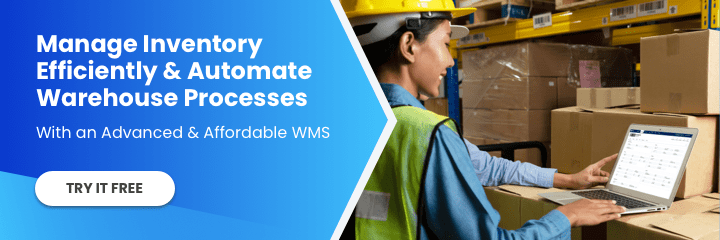Understanding the total WMS software costs before investing in one is essential. From software licenses to training and customization, calculating the expenses accurately will help you make an informed decision. This article will break down the numbers and provide a comprehensive guide to calculating the total cost of WMS software implementation.
Click Here: Optimize Your Warehouse Operations With This Advanced and Affordable WMS
With the right WMS, you can streamline your warehouse operations, increase efficiency, and boost your bottom line. However, the cost of implementation can vary widely depending on factors such as the size of your inventory, the complexity of your operations, and the level of customization required.
We will explore the various cost components, including initial expenses and ongoing maintenance, to give you a clear understanding of what to expect. By understanding the total cost of WMS implementation, you can plan your budget effectively and ensure a smooth transition to a more efficient warehouse management system.
Stay tuned as we break down the numbers of WMS software cost and help you make a sound financial decision for your business.
Why Calculating WMS Software Cost is Important
Implementing a WMS is a significant investment for any business, and it’s crucial to clearly understand the total WMS software cost involved. By calculating the expenses accurately, you can avoid any nasty surprises down the line and ensure you have the necessary budget to cover all aspects of the implementation process.
Moreover, understanding the total cost allows you to evaluate the return on investment (ROI) of implementing a WMS. By comparing the potential benefits with the expenses, you can decide whether the investment is financially viable for your business.

7 WMS Software Cost Components
To accurately calculate the total cost of WMS software implementation, it’s essential to consider all the different components involved. Here are the key factors to consider:
1. Subscription Fees
WMS SaaS providers usually charge a monthly or annual subscription fee that covers software usage, maintenance, updates, and support. This means you can save on some of the costs below, like software licensing, hardware, maintenance, and more. Because of this, WMS SaaS is a more cost-effective option for smaller businesses or those without a large upfront budget.
If you are implementing an on-premise WMS system, the following costs should be applicable.
2. Software Licensing Fees
For on-premise WMS systems, the licensing fees are the first component of the total cost of WMS software implementation. These fees can vary depending on the type of WMS software you choose, the number of users, and the features included. Some software providers offer a one-time licensing fee, while others charge an annual subscription fee.
When considering the licensing fees, it’s essential to evaluate the scalability of the software. Will the licensing fees increase as your business grows? Additionally, consider additional costs for add-ons or modules that may be required for your specific operations. It’s essential to carefully review the pricing structure and ensure it aligns with your budget and long-term goals.
3. Hardware and Infrastructure Costs
Implementing a WMS may also involve investing in the necessary hardware and infrastructure to support the software. This can include servers, network equipment, barcode scanners, printers, and mobile devices. The cost of these hardware components can vary depending on the size of your warehouse and the level of automation you require.
Additionally, you may need to consider the cost of upgrading your existing infrastructure to ensure compatibility with the WMS software. This could involve upgrading your network, increasing storage capacity, or investing in new hardware devices. It’s essential to evaluate these costs and factor them into your budget when calculating the total cost of implementation.
4. Implementation and Customization Fees
Implementing a WMS requires a significant amount of time and expertise. Most WMS software providers charge implementation fees to cover the costs associated with setting up the system and customizing it to fit your specific requirements. These fees can vary depending on your operations’ complexity and the customization level required.
When evaluating implementation fees, it’s essential to consider the expertise of the implementation team. Are they experienced in your industry and familiar with your specific challenges? Additionally, consider any additional costs for data migration and integration with existing systems. Discussing the implementation process with the software provider will help you understand the potential costs.
5. Training and Support Costs
Proper WMS training is essential to ensure a successful implementation. Most software providers offer training programs to help your team understand how to use the system effectively. These training programs can vary in duration and cost, so it’s essential to consider the training fees when calculating the total cost of implementation.
In addition to training, ongoing support is crucial to address any issues or questions that may arise. Some software providers offer support packages with regular updates, bug fixes, and technical assistance. Evaluating the support options and associated costs is essential to ensure that your team has access to the resources needed to maximize the WMS software’s benefits.

6. Ongoing Maintenance and Upgrade Expenses
Once the on-premise WMS software is implemented, ongoing maintenance and upgrade expenses must be considered. These costs can include software updates, bug fixes, and security patches. Some software providers offer maintenance packages that cover these expenses, while others charge separately for each update.
It’s essential to evaluate the frequency of updates and the associated costs when considering the total cost of implementation. Additionally, consider any costs related to hardware maintenance, such as equipment repairs or replacement. Maintaining the WMS software and hardware ensures the system’s effectiveness and longevity.
It’s important to note that these costs do not occur with WMS SaaS. The vendor performs maintenance and upgrades, and users automatically experience these as soon as they open the web application.
7. Hidden Costs to Consider
In addition to the direct costs mentioned above, there are several hidden costs that you should be aware of. These costs may not be immediately apparent but can significantly impact the total cost of WMS software implementation. Some examples of hidden costs include:
- Integration with existing systems: If your business has existing systems in place, such as an Enterprise Resource Planning (ERP) system or an Order Management System (OMS), integrating the WMS with these systems may require additional time and resources.
- Data cleanup and migration: Before implementing a WMS, you may need to clean up and migrate your existing data to ensure accuracy and compatibility with the new system. This process can be time-consuming and may require external assistance.
- Change management/downtime: Implementing a new WMS may require changes to your standard operating procedures and workflows.
- Additional licenses and hardware: As your business grows, your WMS licenses and hardware must keep up.
What is the Average WMS Software Cost?
The cost of a Warehouse Management System (WMS) can vary widely depending on various factors such as the size of the business, the complexity of the operations, the features and functionalities required, and the deployment model (cloud-based or on-premises). Additionally, some WMS providers offer scalable pricing based on the number of users, transactions, or SKU (Stock Keeping Unit) counts.
The cost of a WMS can range from a few hundred dollars for small businesses with basic needs to several hundred thousand dollars or more for larger enterprises with complex requirements.
For Cyzerg, our WMS starts with a free plan with no hidden charges. If the business requires more functionalities, our paid tiers start at $14.99/mo per user.
Please find our complete pricing table here.
Conclusion and Final Thoughts
It is essential to calculate the total cost of WMS software implementation. This will help you make an informed financial decision. Consider all the components, including subscription fees and software licensing fees. Also, consider hardware and infrastructure costs. Include implementation and customization fees, training and support costs, ongoing maintenance and upgrade expenses, and hidden costs. That way, you can accurately assess the financial impact on your business.
Remember to evaluate the potential benefits and ROI with the total cost. Determine if implementing a WMS is the right choice for your business. With careful planning and budgeting, you can smoothly transition to a more efficient warehouse management system. You can then reap the rewards of increased productivity and profitability.
For more information about streamlining warehouse operations or the latest warehouse technologies trends, you can follow us on LinkedIn, YouTube, X, or Facebook. If you have other inquiries or suggestions, don’t hesitate to contact us here. We’ll be happy to hear from you.












